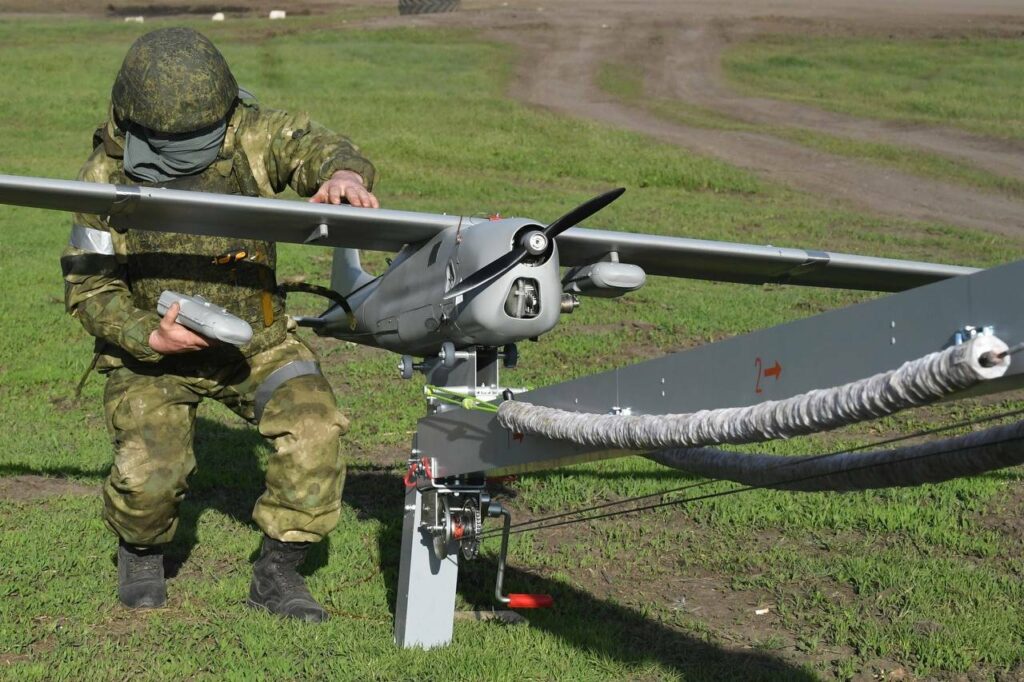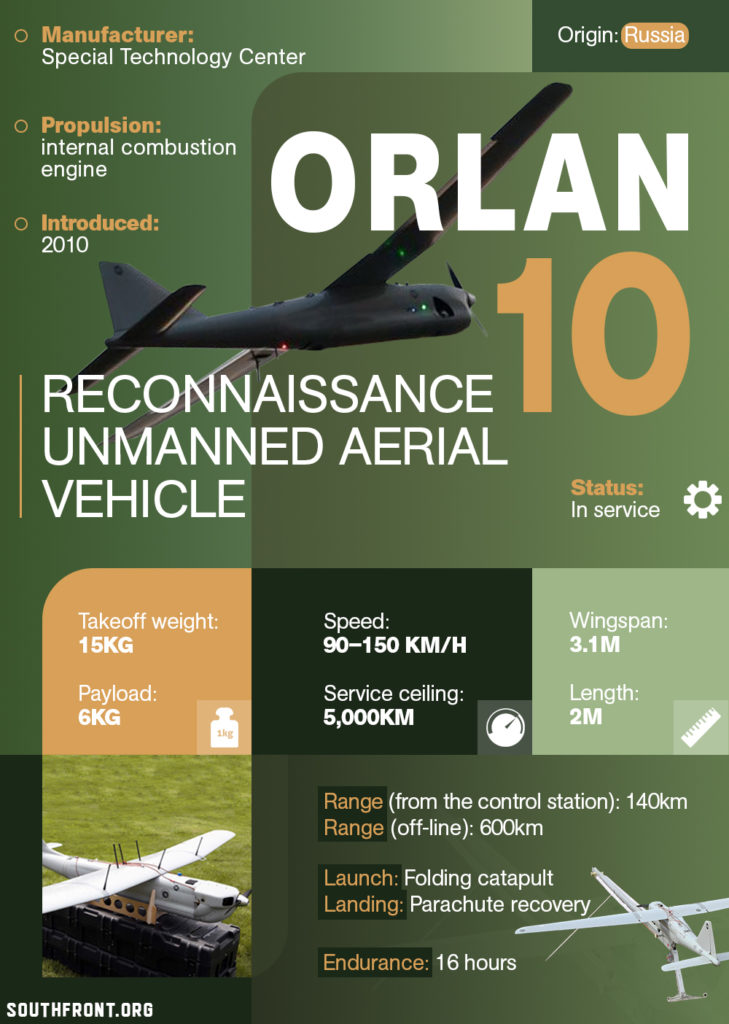Descriptions of many videos showing the destruction of NATO-supplied equipment say that the fire adjustment is made with Orlan UAVs. Even the founder of the terrorist organization “Azov” Andrei Biletsky recently admitted that these UAVs are a serious problem for the Armed Forces of Ukraine (AFU). According to him, the presence of Orlan UAVs on the battlefield make artillery operations of the AFU impossible. They are also obstacle for offensive actions involving armorued vehicles or any large groups of forces, delivery of ammunition, engineering works and digging caponiers. Russian drones detect all these attempts and direct precise strikes.
The Orlan-10 UAV entered production back in 2015. It is unknown how many of them were produced before the start of the Russian special operation. However, Orlan UAVs quickly showed their effectiveness and the army’s need for them increased. According to the Russian Ministry of Defense, by July the production of these UAVs increased by 53 times. Now they are regularly employed along almost the entire line of contact.
The Russian Armed Forces are armed with two versions of the UAV: the lighter Orlan-10 and its modernization, the Orlan-30, which is larger and can lift up to 12 kg of payload. Both versions fly at speeds of 70-150 km/h. Optical systems allow to view the enemy at a distance of 8-10 km, including in the infrared range. It also conducts electronic reconnaissance like detecting clusters of mobile phone signals. Therefore, Orlan UAVs often launch in three: the first watches, the second listens, the third provides communication with the base. The UAV can fly autonomously, without communicating with the operator in radio silence mode. To do this, you can specify up to 100 points, including “home”. The UAV is guided by GPS, GLONASS, and if enemy electronic warfare systems are jamming satellites, it is guided by the internally integrated map system.
Returning to complains of Biletsky, he considers the Orlans more effective than the Ukrainian Leleka and Western analogues:
“It has the Cometa complex – a positioning system focused on satellites not only GPS and GLONASS, but also Chinese satellites. It is extremely difficult to defeat it with electronic warfare. You push one, another two, three, eight work.”
The Orlan UAV is capable of performing a combat mission at a distance of 120 km from the operator. Orlan-10 can stay in the air for 10 hours, while Orlan-30 – up to 16 hours. The flight altitude is up to 6,000 m. They can operation at day and night, in any weather, in heat up to +50 degrees Celsius and in frosts down to -30 degrees.
An important feature is the integration of Orlan UAVs with the Msta-SM self-propelled guns. Therefure, detected targets could be destroyed in a matter of minutes. In a standard situation of detecting enemy equipment, 20 minutes can pass before a shell or missile hits the target. Therefore, the enemy may use this time to redeploy. In turn, the tandem from Orlan UAVs and Msta-SM self-propelled guns works in 3-4 minute timeframe.
Orlan UAVs also could assist Krasnopol guided artillery system. For this purpose, Orlan-30 is equipped with a laser pointer-rangefinder. This further increases the accuracy of the hit. The UAV briefly illuminates the target with a laser to correct the flight path of the projectile.
There is a one more important detail regarding Orlan UAVs. The production of them employs some foreign components, but none of them are irreplaceable. All can be easily replaced with analogues. Therefore, Russia has in its arsenal one of the best domestically produced reconnaissance UAVs in the world.








in dumbmark we have potato drone in my nursing home
rubber duck drone terrify jens
you always got dirt on the mind jens. why you talk about potato? mashed? like your arssehole mashed, roasted, steamed and boiled like a rotten egg.
celkom slušné parametre. tieto stroje musia robiť veľké problémy banderovským fašistickým beštiám. určite sú z nich posratí. inak nedivím sa im, keď uvážite, že len ťažko sa dá voči nim brániť. ani útek niekedy nepomáha. svetu mier!!!
the graphic shows a service ceiling of 5000km. that would put it in space. either write m or remove the zeros.
im impressed by how quickly the russians are innovating and learning from this war that was thrown on them by nato nazis. russia was generally behind in drone tech before the smo began, now it is a world leader in certain types of drones. the learning curve in russia is steep. the learning curve in nato is flat, they rely overwhelmingly on their isr supremacy
the u.s. “cancer” is their military industrial complex.
aside from friend-foe-detection: what is the cause of the delay still being in the range of multiple minutes in the case of the “integration with the msta-sm self-propelled guns”? such a big delay seems plenty enough to fire-and-leave-position for an artillery piece.
presumably it’s communication > computation > positioning > travel time. i suppose they could have the computation done by the drone’s base station in real time as long as the computer knows where the artillery pieces are in relation to itself but you still have to aim the guns, load them if they aren’t autoloading and then account for possibly tens of kilometers of travel time for the shell, there’s going to be delay.
drones made by western parts. go, first make some chips and cameras please.